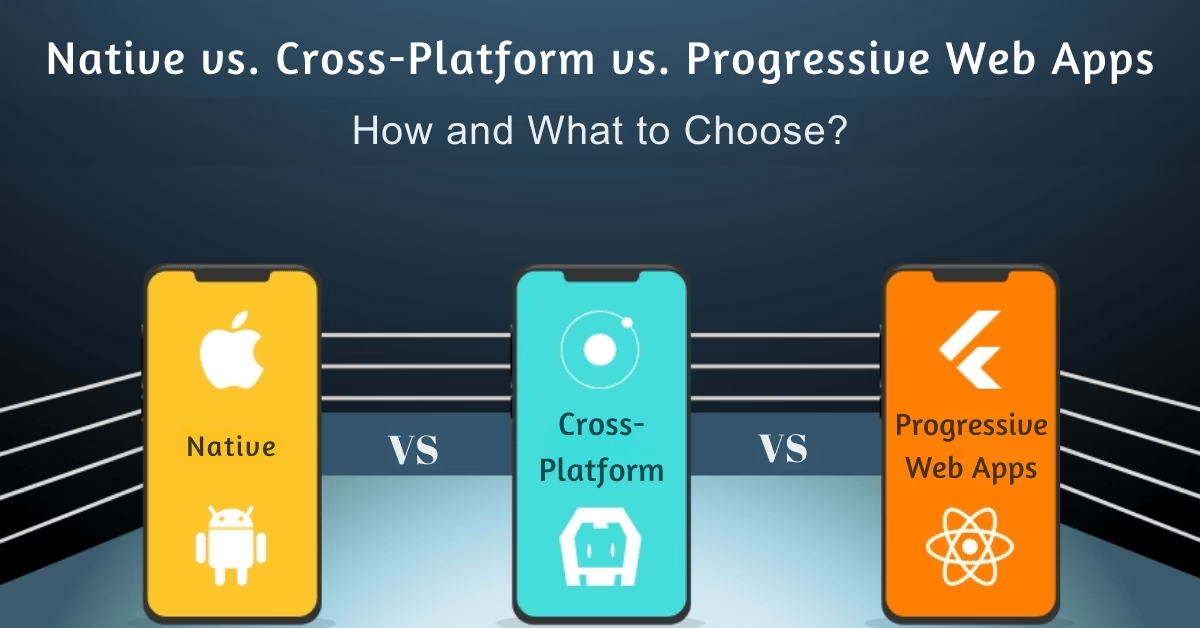Native vs cross-platform vs progressive web apps has become a hot topic in app development, especially as businesses race to deliver better mobile experiences in 2025. If you’re a founder or entrepreneur, choosing between these three options can feel overwhelming. Do you invest in the speed and polish of native apps, the flexibility of cross-platform, or the accessibility of PWAs? Each path comes with trade-offs, and the right decision depends on your goals, budget, and audience. In this guide, we’ll unpack the pros and cons of each approach, compare native vs cross-platform vs progressive web apps side by side, and help you make an informed choice.
What Are Native Apps?
In the native vs cross-platform vs progressive web apps debate, native apps are built specifically for a single platform like iOS or Android, using official programming languages and development kits. They’re downloaded from the App Store or Google Play and provide the most seamless experience because they’re fully integrated with the device.
Benefits of Native Apps
- Best performance and responsiveness
- Complete access to hardware features like camera, GPS, or sensors
- Stronger security and compliance with app store policies
Limitations of Native Apps
- Expensive to develop since you need separate versions for iOS and Android
- Longer time to market
- Requires developers with specialized platform knowledge
What Are Cross-Platform Apps?
Cross-platform apps allow developers to use one codebase for both iOS and Android. Popular frameworks include Flutter, React Native, and Xamarin. They save time and cost but may not always match the smoothness of native apps.
Benefits of Cross-Platform Apps
- Single codebase reduces cost and time
- Easier to update and maintain
- Can still be published to both app stores
Limitations of Cross-Platform Apps
- Performance may lag behind native for heavy apps
- Limited access to device-specific features
- Complex animations can sometimes cause issues
What Are Progressive Web Apps (PWAs)?
Progressive web apps bridge the gap between websites and mobile apps. They’re accessed through a browser but feel like native apps with features such as offline mode and push notifications. Users can add them to their home screen without downloading from an app store.
Benefits of PWAs
- No installation required, instant access via a link
- Works across devices and platforms
- Affordable development and maintenance
Limitations of PWAs
- Limited offline use compared to native
- Restricted access to hardware features
- Not as visible in app stores
Comparing Native vs Cross-Platform vs Progressive Web Apps
Here’s how native vs cross-platform vs progressive web apps compare across major factors:
Development Time
- Native apps take the longest since separate builds are needed.
- Cross-platform apps are faster due to shared code.
- PWAs are the quickest to deploy.
Cost
- Native: Highest cost
- Cross-Platform: Moderate
- PWA: Most affordable
Performance
- Native: Outstanding, suitable for gaming and AR
- Cross-Platform: Good enough for most apps
- PWA: Adequate but not ideal for high-performance needs
When to Choose Native Apps
Go for native apps if:
- Your app needs heavy graphics, AR, or VR.
- Security and compliance are critical.
- You want to guarantee the best possible user experience.
When to Choose Cross-Platform Apps
Choose cross-platform if:
- You’re a startup with limited budget
- You want faster launch on both iOS and Android
- Your app doesn’t require deep hardware integration
When to Choose Progressive Web Apps
PWAs make sense if:
- You’re targeting a global audience where internet speed or storage is limited
- You need a simple, cost-effective solution
- You want users to access your app instantly without downloads
Real-World Examples
- Native: WhatsApp, Spotify, Instagram
- Cross-Platform: Reflectly, Alibaba, Facebook Ads Manager
- PWAs: Starbucks, Twitter Lite, Pinterest
Mistakes to Avoid
Many entrepreneurs make errors when choosing an app development approach. Common mistakes include:
- Picking the cheapest option without considering performance
- Assuming PWAs will deliver the same experience as native apps
- Overlooking long-term scalability and maintenance
- Ignoring the expectations of the target audience
The Future of App Development
As technology evolves, the line between these approaches continues to blur. Frameworks like Flutter are closing the performance gap with native apps, while PWAs are steadily improving with better offline support and push notification features. It’s likely that businesses will adopt a hybrid strategy, choosing the right approach based on project requirements rather than a one-size-fits-all model.
The choice between native vs cross-platform vs progressive web apps depends on what you value most. If performance and user experience are your top priorities, native is the way to go. If speed and cost are more important, cross-platform offers the best balance. And if accessibility and affordability are your main concerns, PWAs are a smart option. The best app for your business is the one that aligns with your goals and audience, not necessarily the one that’s most popular.
FAQs
Cross-platform apps are often the best fit for startups since they balance cost, speed, and functionality.
PWAs are great for simple apps but can’t fully match native performance or access all hardware features.
Yes, one developer can often handle cross-platform builds since only one codebase is required.
No, PWAs bypass app stores and can be shared instantly via a link.
Native apps usually deliver the best ROI if your product requires high performance and a premium user experience.












